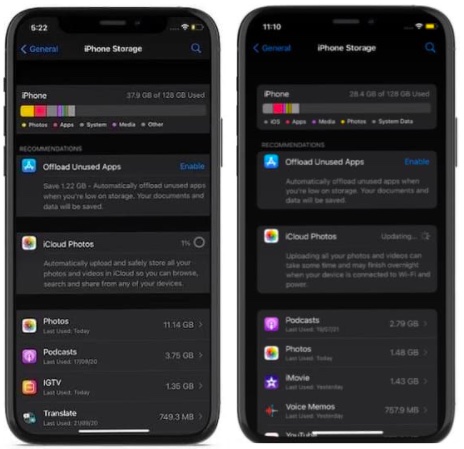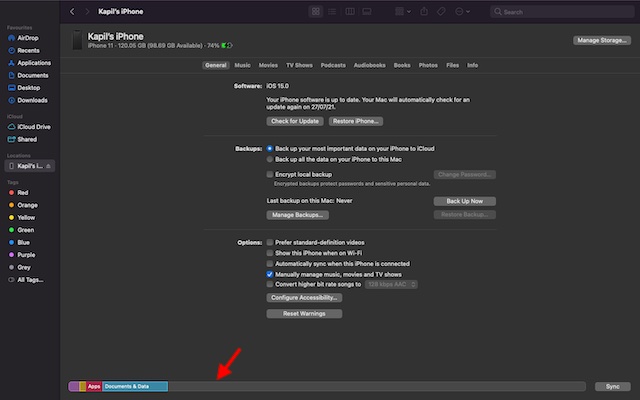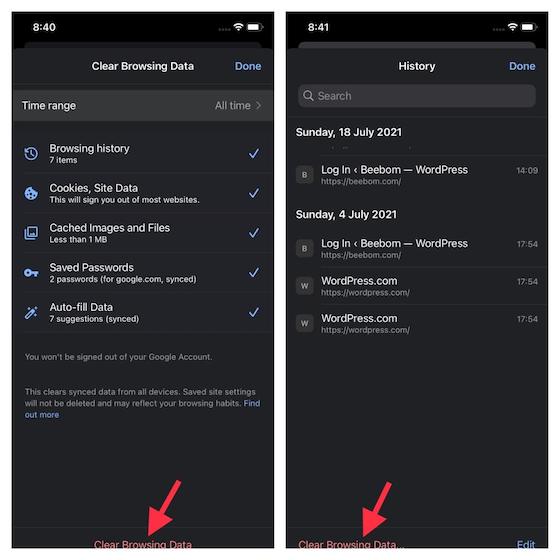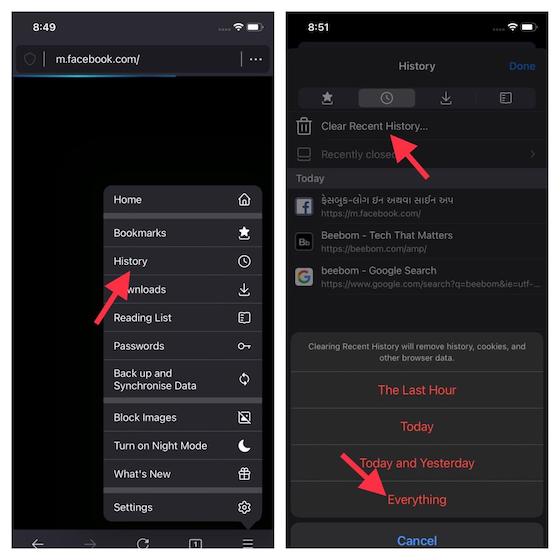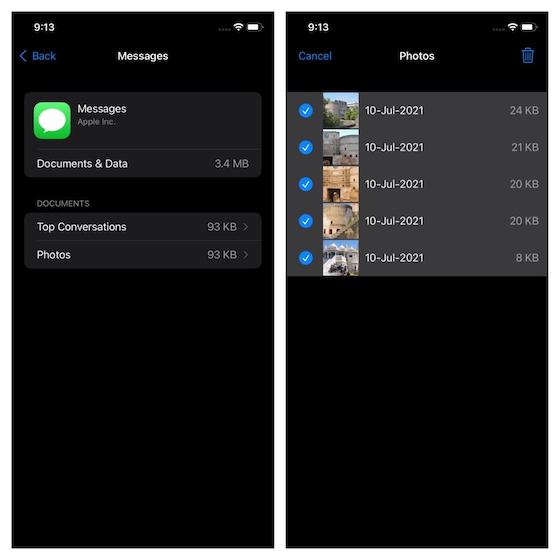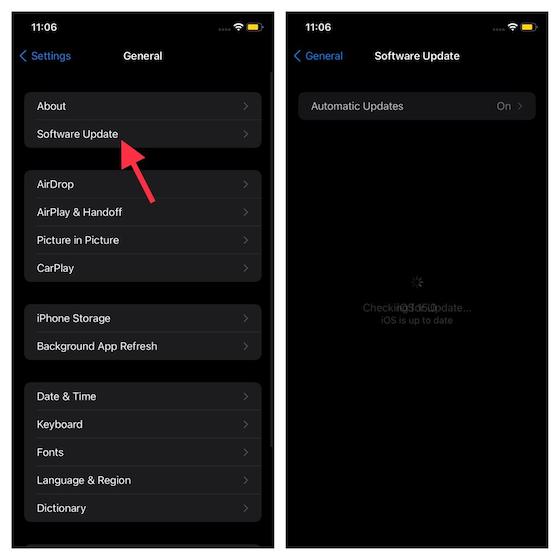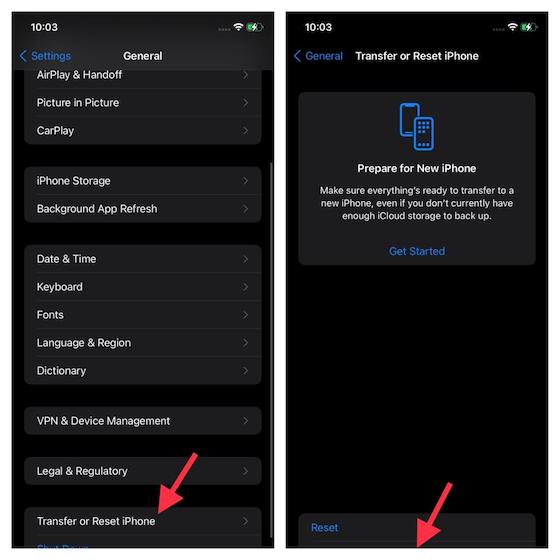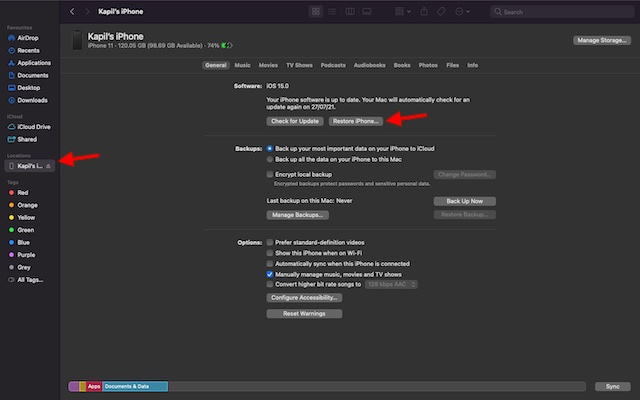Tips to Clear System Data on iPhone or iPad (2022)
If you’re annoyed due to the ever-growing system data on your iPhone or iPad, fret not. We have 6 effective methods to clear iPhone system data with ease. However, before trying out all the means and ways to delete the System Data on iOS or iPadOS, let’s first understand what is it all about.
As always, you can use the table of contents below to quickly navigate through this article.
What is System Data on iOS and iPadOS?
To make the task of tracking storage consumption on iPhone and iPad a straightforward affair, iOS presents a pretty neat storage section that breaks down the consumption for users to know how much each category (apps, media, photos, iOS, and more) has captured. The colored section of each category can determine the amount of space each one of them has occupied.
If you are wondering what the “System Data” section includes, you should know that it comprises everything that doesn’t fall in the bracket of the predefined categories. According to Apple, the storage category consists of non-removable things such as offline translation languages, fonts, dictionaries, Siri voices, logs, cache, local keychain data, CloudKit Database, and more. Long story short, it’s a cluster of a variety of miscellaneous data that exists on your iOS device.
Note: It’s worth noting that System Data was previously called Other Data. People using iOS 14 or earlier can still find the previous name. If you are one of them, you can check out our detailed guide on how to clear other data on iPhone.
How to View System Data on iOS and iPadOS
There are two ways to view System Data on your iOS or iPadOS device.
On iPhone or iPad
Head to the Settings app.Select the General option and then tap on iPhone Storage to view the breakdown.
On Mac/Windows PC
Connect your iPhone or iPad to a Mac or Windows computer.Launch Finder/iTunes.Select the device and check out the storage consumption bar located at the bottom of the screen.
How to Clear System Data on iPhone and iPad
Luckily, there are multiple ways to delete the System Data on iPhone and iPad. While it would have been much better if there existed a dashboard to view and clear all the categories of system data quickly, there are viable workarounds that get the job done. Of course, the whole process is a tedious affair that warrants some patience.
Clear App Cache
It’s recommended to clear the cache of apps from time to time. Else, the huge pileup of the cached data starts creating problems like random crashing, freezing, unexpected sluggishness, and even draining more battery. Fortunately, most apps let you delete the cache right from inside their settings. Here’s what to do:
Head over to a desired app.Tap on its Settings and look for the option to clear the cache.
In the screenshot below, you can see the option to delete the cache of the Spotify app under the Storage section of the Settings. This way, you can save space on your device. If you’re still not able to clear out enough space on your iPhone, you can offload apps to free up some additional storage. This ability deletes the unused apps but keeps their documents and data. With iOS 15, the unused apps get offloaded automatically once the option is enabled. For this,
Head to the Settings app and select General.Now, tap on the Storage option. There, you will find the option to offload apps. Just Enable it.
To stop offloading apps, you can to the Settings -> App Store -> disable the Offload Unused Apps option.
In addition to this, you can choose to delete or reinstall existing apps, which can help in clearing some space for you.
Clear Browsing History and Website Data
Another reliable way to prevent the System Data from capturing a lot of unnecessary storage is to delete the browsing history and website data on a regular basis. Though saved history makes it more convenient to access frequently-visited websites and saves you time, you shouldn’t keep the website history for far too long.
Personally, I prefer to get rid of the browsing history every once in a while. It not only lets me keep the browser clutter-free but also safeguards my privacy. Besides, it also plays a vital role in helping the browser run smoothly. Clearing the browsing history of all the popular web browsers such as Safari, Chrome, and Firefox is pretty easy. Let me show you how it’s done:
Clear Safari Browsing History
If you want to clean up Safari caches, navigate to the Settings app on your iPhone or iPad -> Safari -> Clear History and Website Data.
Clear Chrome Browsing History
For Chrome, open the app -> tap on the three-dot icon at the bottom -> choose History -> tap on Clear Browsing Data. After that, choose the time range and hit Clear Browsing Data again.
Clear Firefox Browsing History
Launch the app -> tap on the menu button (three tiny horizontal lines) in the bottom right corner of the screen -> tap on History. Following this, select Clear Recent History and then choose Everything in the menu to wipe out the entire history.
Delete Large Message Attachments
It’s always good to remove the message attachments that are no longer required so that they don’t end up occupying the iPhone or iPad’s storage. Apple’s Message app provides a simple way to keep track of message attachments and remove them with ease. Here’s what to do:
Go to the Settings app on your iPhone/iPad.Select General and then iPhone/iPad Storage.
Now, hit the Messages option. Under the Documents section, you should see different categories like Top Conversations, Photos, and Videos. Now, head into the respective category and then delete the useless attachments.
For those who don’t know, WhatsApp has a similar way of managing media and deleting unnecessary files to save up storage. You can follow our guide on how to manage storage on WhatsApp to further free up your device’s space.
Reduce Message History
Apart from getting rid of the unnecessary message attachments, you can also choose to remove the history of the text messages from time to time, so that you are able to maintain your iPhone or iPad’s space. For this,
Get to the Messages section via the Settings, and select the Keep Messages option.From there, choose to go for 30 days or 1 year instead of Forever. You will now be prompted with an option to delete older messages. If you are okay with this, go ahead and make the changes. This way, you can delete your message frequently.
Update Software
Not too long ago, iOS/iPadOS 13 had faced one rare issue that prevented the system from freeing up storage on iPhone and iPad. The problem was so rampant that Apple had to release a software update to fix the issue. So, if your device storage is full and it’s mostly consumed by System Data, try updating the software.
Just head to the Settings app and select General.Select the Software Update option. Now, download and install the latest version of iOS/iPadOS.
Restore Your Device As New
If the aforementioned steps haven’t really helped, I would recommend you restore your device as new. While it’s a big step for deleting the System Data on iPhone and iPad, it’s the way to go, especially when you want to have a clean slate. But before trying out this method, make sure to back up your device via iCloud (Settings app -> your profile -> iCloud -> iCloud Backup -> Back Up Now) or iTunes.
After you have backed up your device,
Head over to the Settings app.Select General and then Reset. (In iOS 15, you will need to choose Transfer or Reset iPhone/iPad -> Erase All Content and Settings). Once your device has been erased, follow the set-up assistant to set up the device.
Alternately, you can use iTunes to restore your device. Simply, connect your iPhone to a computer and launch iTunes (macOS Mojave or earlier or Windows)/Finder (macOS Catalina or later). Now, select your device and then hit Restore iPhone/iPad. After that, follow the prompts to complete the process.
Is clearing cache harmful?
Clearing cached data is not harmful. In fact, it allows you to get rid of the “junk” system files that only end up occupying the device’s extra space and slowing it down.
Why does System Data on iPhone keep increasing?
System Data (or Other data) on iPhone can quickly occupy a lot of storage space. While a lot of this is due to things like caching, logs, and temporary file storage, there are other reasons as well. If you watch a lot of streamed video content on your iPhone, that can quickly eat into your iPhone’s storage space as well by adding to System Data.
Delete System Data on iPhone and iPad With Ease
So, that’s how you can track down and delete the mysterious System Data on your iPhone and iPad. Considering that this part takes significant storage space, we wish Apple looks into this and comes with a more centralized way of managing miscellaneous data. Until that happens, take advantage of these effective ways to keep your iOS device decluttered.
Do you have any related questions or feedback? If yes, make use of the comments section below.
